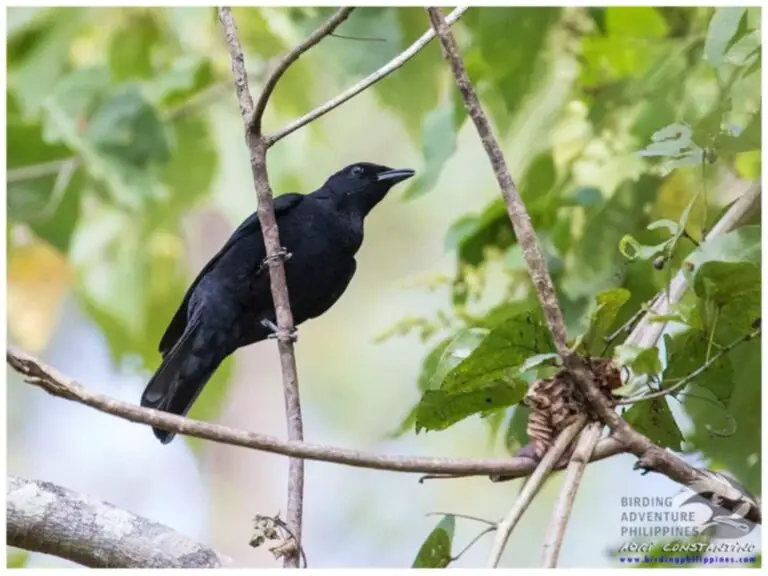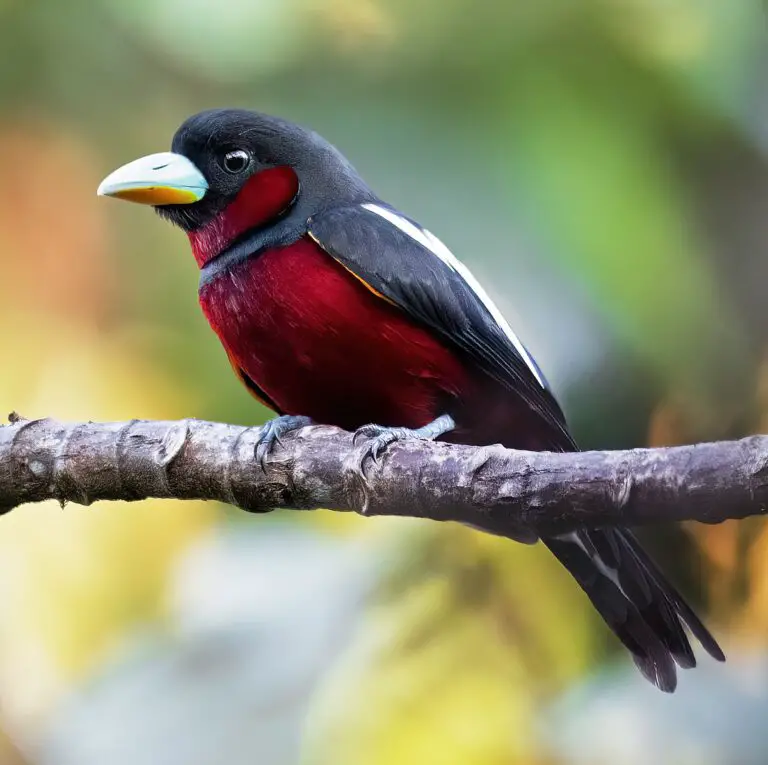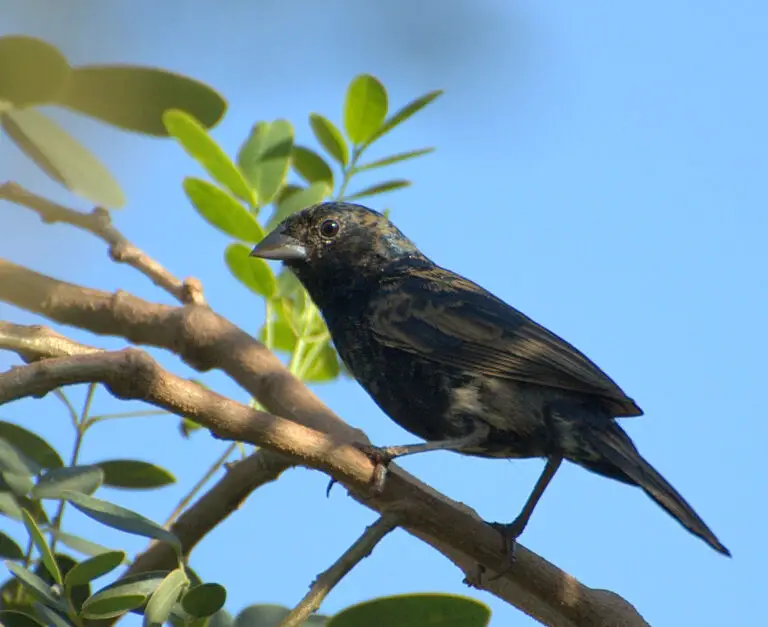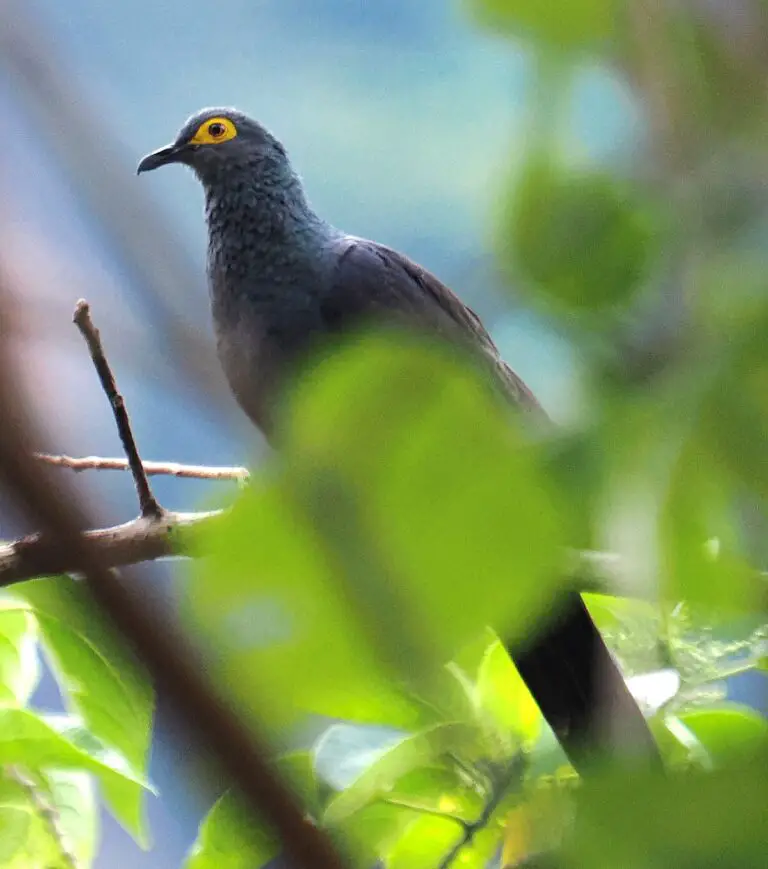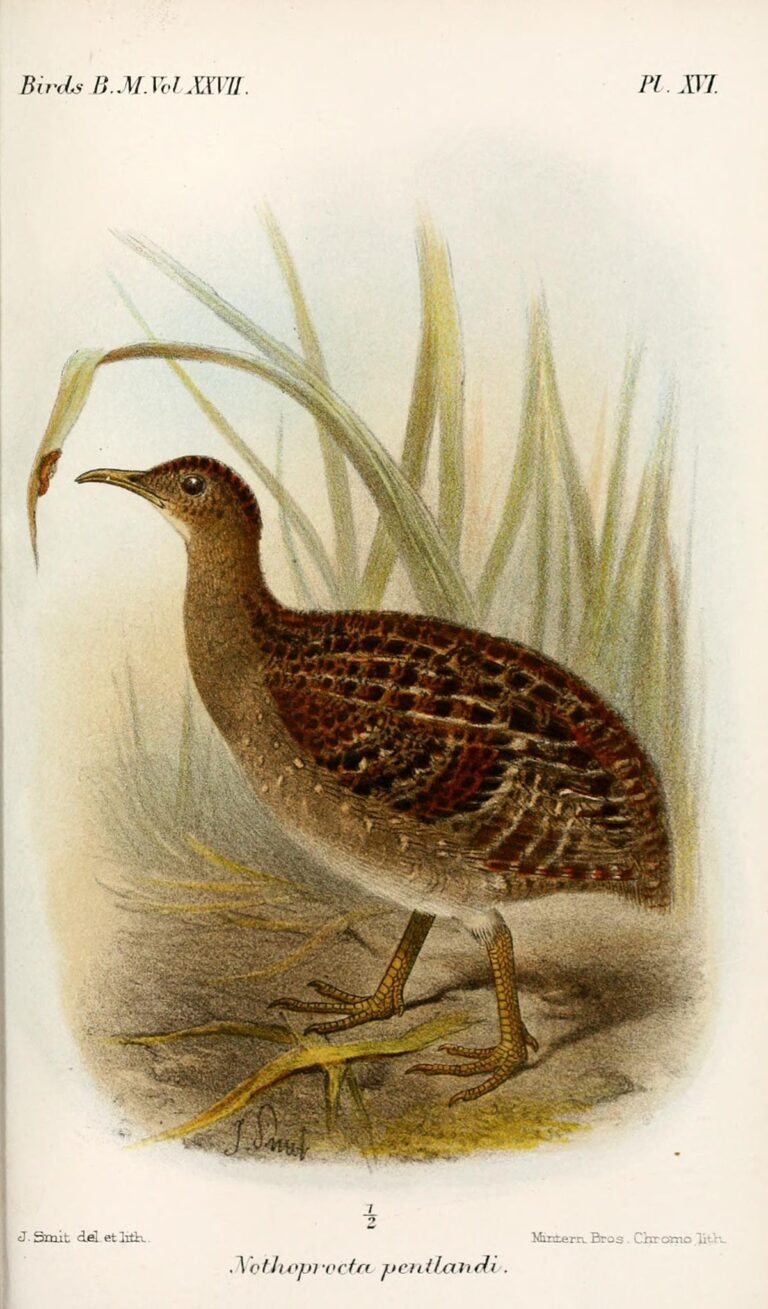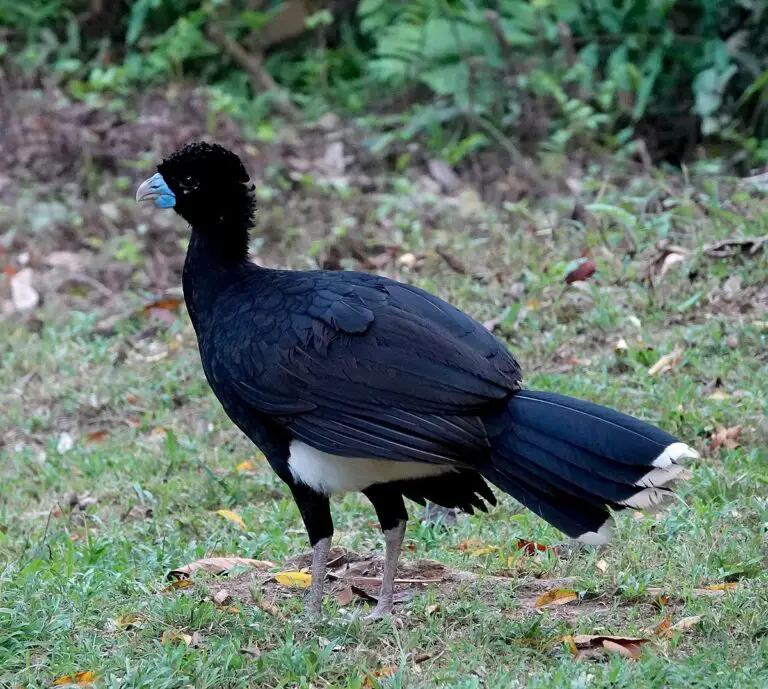Yellow Bellied Sapsucker (Sphyrapicus varius)
“The males are responsible for choosing the nesting tree most of the time. Luckily, cavity nests are often reused for multiple breeding seasons (up to 7 years.)”
The Yellow-bellied Sapsucker’s scientific classifications:
- Kingdom: Animalia
- Phylum: Chordata
- Class: Aves
- Order: Piciformes
- Family: Picidae
- Genus: Sphyrapicus
- Species: Sphyrapicus varius
Its conservation status is categorized as “Least Concern” by the International Union for Conservation of Nature (IUCN).
Yellow-bellied Sapsuckers are primarily found in North America, but they also occur in Central and South America during migration or in winter. They inhabit various types of forests and wooded habitats across their range.
Here’s a collection of facts about the Yellow-bellied Sapsucker:
- Prey: Yellow-bellied Sapsuckers primarily feed on insects, with ants being a main prey item.
- Group Behavior: They often form family units and sometimes flock together.
- Fun Fact: Males typically choose the nesting tree, and cavity nests are often reused for multiple breeding seasons, sometimes up to 7 years.
- Estimated Population Size: Approximately 14 million individuals.
- Biggest Threat: Currently, these birds face no significant threats within their range.
- Most Distinctive Feature: Their red crown is a notable characteristic.
- Wingspan: Ranges from 3.5 to 16 inches.
- Incubation Period: Typically lasts 10 to 14 days.
- Age of Fledgling: Young birds usually fledge between 25 to 30 days after hatching.
- Habitat: They inhabit edge habitats and young forests.
- Predators: Raccoons and snakes are among their predators.
- Diet: Yellow-bellied Sapsuckers are omnivores, with sap being a favorite food.
- Lifestyle: They are diurnal, meaning they are active during the day.
- Favorite Food: Sap is a preferred food source.
- Common Name: Yellow-bellied Sapsucker.
- Location: Found in Canada, Northeastern United States, Eastern Alaska, Eastern United States, West Indies, and Central America.
- Average Clutch Size: Not specified.
- Migratory: Yes, they are migratory birds.
Physical Characteristics:
- Color: They display a range of colors including brown, grey, yellow, red, black, and white.
- Skin Type: Covered in feathers.
- Lifespan: Typically live 6 to 7 years.
- Weight: Approximately 1.77 ounces.
- Length: Their length ranges from 7 to 8.4 inches.
- Venomous: They are not venomous.
These facts provide a comprehensive overview of the Yellow-bellied Sapsucker’s behavior, habitat, diet, and physical characteristics!
Yellow-bellied Sapsuckers play a crucial role in their ecosystem through their unique feeding behavior. By drilling sap wells into trees and consuming the sugary sap, they create a valuable resource that benefits not only themselves but also a variety of other species, including birds, insects, and mammals. This behavior can attract a diverse array of organisms, making the sapsucker an important contributor to the biodiversity and ecological health of the forests they inhabit.

Three Incredible Yellow-Bellied Sapsucker Facts!
Those are fascinating facts about Yellow-bellied Sapsuckers! Here are three incredible ones:
- Cavity Nesters: Yellow-bellied Sapsuckers are cavity nesters, and it’s the males who predominantly undertake the excavation work, spending two to three weeks to create the cavity for nesting. This showcases their dedication to providing a suitable nesting site for their offspring.
- Mating Behavior: While not strictly monogamous, Yellow-bellied Sapsuckers do form mating pairs that stay together for the nesting season and raising of their young. Interestingly, these pairs may reunite for future breeding seasons, but this behavior is more tied to the nesting area or specific tree rather than the mate itself.
- Omnivorous Diet: Despite their name and their strong association with sap consumption, Yellow-bellied Sapsuckers are omnivores. While sap forms a significant portion of their diet and occupies much of their foraging time, they do consume other food items as well. However, their intricate relationship with sap, from creating and maintaining sap wells to feeding from them, highlights their unique foraging behavior and ecological role in their habitat.
Where to Find the Yellow-Bellied Sapsucker
The Yellow-bellied Sapsucker is native to various regions, including Canada, northeastern United States, eastern Alaska, eastern United States, West Indies, and Central America. Additionally, they are occasionally observed as rare vagrants in Ireland and the United Kingdom.
During the warmer months, they prefer habitats such as edge habitats and young forests, particularly those recovering from timber harvesting. These areas provide ample fast-growing trees with ripe sap wells, satisfying their craving for sap.
While they don’t rely on dead trees for nourishment like many other woodpecker species, Yellow-bellied Sapsuckers do search for trees with decay or dead branches to build cavity nests.
Nesting Facts:
- Preferred Tree Species: They tend to choose certain tree species for nesting, including aspen, birch, maple, beech, and elm. They often select trees infected with fungus, making drilling easier.
- Nesting Behavior: Males typically select the nesting tree and undertake the excavation of the cavity, which takes between 14 to 21 days. Cavities are often reused for multiple breeding seasons, sometimes up to 7 years.
- Cavity Size: While the entrance hole is small (around 1.5 inches), the actual cavity is much larger, usually about 10 inches deep.
- Clutch Size: Yellow-bellied Sapsuckers typically lay 4 to 6 eggs in a clutch.
- Number of Broods: They typically raise one brood per nesting season.
- Incubation Period: Eggs are incubated for about 10 to 13 days.
- Nestling Period: After hatching, nestlings remain in the nest for about 25 to 30 days.
- Egg Description: Their eggs are white.
- Condition at Hatching: Newly hatched chicks are featherless and blind with pink skin and a gray bill; their eyes open after around 8 days.
These nesting facts shed light on the reproductive behavior and nesting habits of Yellow-bellied Sapsuckers, highlighting their fascinating life cycle and adaptation to their environment.
Yellow-Bellied Sapsucker Scientific Name
The Yellow-bellied Sapsucker belongs to the Order Piciformes and the Family Picidae, sharing characteristics and ecological roles with other members of these taxonomic groups.
Order Piciformes: This order includes various bird species, many of which play crucial roles in their ecosystems by consuming insects. Some common members of this order include:
- European great spotted woodpecker (Dendrocopos major)
- Green woodpecker (Picus viridis)
- American flicker (Colaptes auratus)
- Downy woodpecker (Dendrocopos pubescens)
These species contribute to insect control and ecosystem balance, as they primarily feed on insects.
Family Picidae: Yellow-bellied Sapsuckers belong to the Family Picidae, which encompasses various birds such as woodpeckers, sapsuckers, flickers, wrynecks, and piculets. Woodpeckers, in particular, are widespread throughout the world, except for regions like New Zealand, Australia, Madagascar, and Antarctica.
Members of the Picidae family share several distinctive anatomical features, including substantial, straight bills, short legs, a reinforced skull, strong feet adapted for climbing, and stiff tail feathers. One of their most remarkable adaptations is their incredibly long tongues, which they use to extract insects from crevices in wood and other surfaces.
By being insectivores and exhibiting behaviors such as drumming on trees, excavating cavities, and creating sap wells, species within the Family Picidae play vital roles in forest ecosystems, influencing habitat structure, insect populations, and nutrient cycling.

Yellow-bellied Sapsucker Size and Appearance
The Yellow-bellied Sapsucker indeed possesses distinct features that aid bird enthusiasts in identifying them, despite their general resemblance to other woodpecker species. Here’s a breakdown of their key characteristics for identification:
Adult Males:
- Black and white striped face with a red crown and forehead.
- Red throat bordered by a thin black line.
- Upper parts barred white and black, with minimally marked wings showing one bold white stripe starting at the shoulder and leading down the wing.
- Easily identifiable white stripe on upper wings during flight.
- White rump with a black tail and white barring on the central feathers.
- Lighter underparts with mottled black and white, sometimes appearing gray with a yellow-buff wash.
- Heaviest yellow markings on flanks, though the extent of yellow may vary.
Adult Females:
- Similar to males but may have a buff wash on the back.
- Throat is white, and crowns are often paler than in males.
- Dark eyes and legs, with grayish-black feet.
Offspring (Juveniles):
- Resemble adults but less boldly marked and lack red.
- Facial markings less distinct, with a buff-brown wash on the head and back.
- Black throat border may be incomplete or absent.
- Scaly appearance on breasts and flanks.
These detailed descriptions provide birders with valuable guidance for distinguishing Yellow-bellied Sapsuckers from other woodpecker species and for identifying different age and sex classes within this species.
Size
Yellow-bellied Sapsuckers exhibit variability in their size, with measurements falling within certain ranges. Typically, they measure between 7 to 8.4 inches in length. Regarding weight, the average is around 1.77 ounces, but individual birds can weigh between 1.2 to 2.2 ounces, reflecting some degree of variation. Their wingspan also varies, spanning from 3.5 to 16 inches. This range in size and weight allows for adaptation to different environmental conditions and foraging behaviors within their range.
Yellow-Bellied Sapsucker Migration Pattern and Timing
Yellow-bellied Sapsuckers exhibit a fascinating migration pattern, with distinct behaviors observed in males and females:
- Migration Timing: They commence their southward migration in September, with females embarking on the journey first, followed shortly after by males. This staggered migration allows for efficient resource utilization and reproductive timing.
- Migration Route: Their migration primarily occurs east of the Rocky Mountains, with birds typically traveling at night and often in flocks. This behavior helps reduce predation risk and provides navigation benefits.
- Wintering Locations: During the colder months, males tend to remain in the United States, favoring areas such as Long Island south and Kansas. In contrast, females migrate to regions including Central America, the West Indies, and Mexico. This spatial separation between genders likely relates to resource availability and reproductive strategies.
- Spring Migration: Males typically arrive at their breeding grounds in the southern regions by late March, with the northward migration occurring in early May. This timing aligns with the onset of favorable breeding conditions and the availability of food resources.
This migration pattern highlights the adaptive strategies employed by Yellow-bellied Sapsuckers to optimize survival and reproductive success across their range.

Diet and Behavior
Yellow-bellied Sapsuckers indeed have a diverse diet, exhibiting omnivorous behavior with a strong affinity for sap. Here’s a breakdown of their dietary habits:
- Sap Consumption: Sapsuckers are highly specialized in extracting sap from trees, spending a significant portion of their foraging time creating, maintaining, inspecting, and feeding from sap wells. While sap may constitute up to 100% of their diet at certain times, in more diverse environments, it typically accounts for around 20%. They consume more sap when its sugar content is higher, providing them with increased energy, especially during demanding periods such as molting.
- Insect Consumption: Insects, particularly ants, form another important component of the Yellow-bellied Sapsucker’s diet. They catch insects in flight near sap wells or expose them by flaking off bark. Some insects are also caught within the sap wells themselves. Interestingly, sapsuckers may dip insects into sap before consuming them, possibly enhancing their nutritional value.
- Additional Food Items: Yellow-bellied Sapsuckers also consume a variety of other food items, including fruit, seeds, leaf buds, and bast (the inner bark of trees). This dietary diversity allows them to exploit a range of resources within their habitat, contributing to their overall ecological versatility.
By incorporating a mix of sap, insects, and other food items into their diet, Yellow-bellied Sapsuckers demonstrate adaptive foraging behaviors that enable them to thrive in diverse environments and meet their nutritional needs throughout the year.
Yellow Bellied Sapsucker Reproduction, Babies, and Lifespan
The breeding range of the Yellow-bellied Sapsucker encompasses a vast expanse of the boreal zone, extending from southern Newfoundland to east-central Alaska. Additionally, it includes portions of northeastern Iowa and western Maryland, with isolated populations found in the Great Smoky Mountains and Allegheny Mountains.
Approximately 55% of the population inhabits Canada’s boreal forests. During the breeding season, males arrive at the breeding grounds several days before females to establish territories. They use a unique drumming cadence to mark their territories, characterized by a short roll followed by a quick pause and multiple individual abbreviated rolls or strikes.
While not strictly monogamous, both males and females typically return to the same nest territory as the previous year, often using the same tree or cavity. Males are primarily responsible for excavating new cavities, a process that takes about a week to 20 days. However, females may assist if necessary, particularly if excavation is delayed or unsuccessful.
Yellow-bellied Sapsuckers prefer to carve out cavities in diseased deciduous trees, such as quaking aspen infected with heartwood decay fungus. Females lay 4 to 6 eggs, which both parents incubate for 10 to 14 days. The offspring begin to fledge when they are 25 to 30 days old, a process that typically takes over two to three days.
Once fledglings leave the nest, they do not return to the cavity. Family groups remain together near sap wells, where offspring learn to feed on sap initially and later transition to feeding on insects. Yellow-bellied Sapsuckers typically only brood once a year, and family groups maintain close proximity to each other during the breeding season.
Lifespan
Yellow-bellied Sapsuckers typically have an average lifespan of 6 to 7 years in the wild. Like many bird species, their lifespan can be influenced by factors such as predation, habitat quality, disease, and environmental conditions. While some individuals may live longer than average, others may have shorter lifespans due to various challenges they face in their natural environment.
Predators, Threats, and Conservation Status
Yellow-bellied Sapsuckers face predation threats from raccoons, particularly if their nests are not positioned at sufficient heights, as well as from snakes. While these birds are considered common within their range and currently face no significant immediate threats, their populations are declining annually, primarily due to habitat loss impacting their nesting and feeding sites.
Despite their decreasing population trend, the Yellow-bellied Sapsucker is categorized as Least Concern on the IUCN Red List. However, this classification underscores the importance of monitoring their population trends and implementing conservation measures to mitigate further declines.
In the United States, the Yellow-bellied Sapsucker is protected under the Migratory Bird Treaty Act, which prohibits the capture, killing, or possession of these birds without a permit. This legal protection helps safeguard them from threats and ensures their conservation across their migratory range.

Population
While it can be challenging to determine the exact population size of the Yellow-bellied Sapsucker, it’s estimated that there are around 14 million breeding individuals. However, this population is facing a decline due to factors such as habitat loss and food scarcity. These threats are particularly concerning because they directly impact the availability of suitable nesting and feeding sites for these birds. As a result, conservation efforts aimed at preserving and restoring their habitat are crucial for ensuring the long-term survival of the Yellow-bellied Sapsucker population.
Communication
Yellow-bellied Sapsuckers indeed employ a variety of vocalizations for communication, including calls used for mating, greeting, and expressing distress or alarm:
- Mating Calls: During mating season, males emit long-distance calls such as ‘neaah,’ ‘wee-wee-wee-wee,’ ‘owee-owee,’ or ‘kwee-urk.’ These vocalizations serve to attract females to various locations within their territory, facilitating courtship and mate selection.
- Greeting Calls: When individuals within the same group encounter each other, they may exchange greeting calls such as ‘week week,’ ‘wurp wurp,’ or similar vocalizations. These calls likely serve as social signals to maintain group cohesion and reinforce social bonds.
- Breeding Area Calls: When pairs meet in their breeding area, they emit a distinctive scratchy call described as ‘quirk quirk.’ This vocalization may serve to establish territorial boundaries or signal pair bonding during the breeding season.
- Alarm Calls: Yellow-bellied Sapsuckers use vocalizations to express distress or alarm when they feel threatened. They emit a soft ‘mew’ that grows louder and hoarser as the perceived threat approaches. Additionally, they produce a shrill ‘quarr’ call during conflicts or encounters with potential predators, alerting other members of their group to potential danger.
By utilizing a repertoire of vocalizations, Yellow-bellied Sapsuckers effectively communicate with conspecifics and respond to various social and environmental cues, contributing to their social organization and survival in their natural habitat.
Similar Species
The Yellow-bellied Sapsucker shares some characteristics with other bird species, including:
- Red-naped Sapsucker:
- Similarity: Like the Yellow-bellied Sapsucker, the Red-naped Sapsucker feeds on sap from trees such as aspens, birch trees, and willows.
- Differences: Red-naped Sapsuckers can be distinguished by their harsh and wailing cries, including stuttered drumming. They also have a red patch on the back of their head, which is a notable difference from the Yellow-bellied Sapsucker.
- Hairy Woodpecker:
- Similarity: Both the Hairy Woodpecker and the Yellow-bellied Sapsucker are woodpecker species found in North America.
- Differences: Hairy Woodpeckers are medium-sized birds, approximately 9 inches in length, with a wingspan of 15 inches. They have a different habitat preference and population size compared to the Yellow-bellied Sapsucker.
- Downy Woodpecker:
- Similarity: Like the Yellow-bellied Sapsucker, Downy Woodpeckers are also woodpecker species found in North America.
- Differences: Downy Woodpeckers are the smallest woodpecker species in North America. They have distinct habitat preferences and behavior, often frequenting backyard bird feeders and joining mixed flocks during winter, unlike the Yellow-bellied Sapsucker.
These similar species share some traits with the Yellow-bellied Sapsucker but can be distinguished based on various physical characteristics, behaviors, and habitat preferences.
